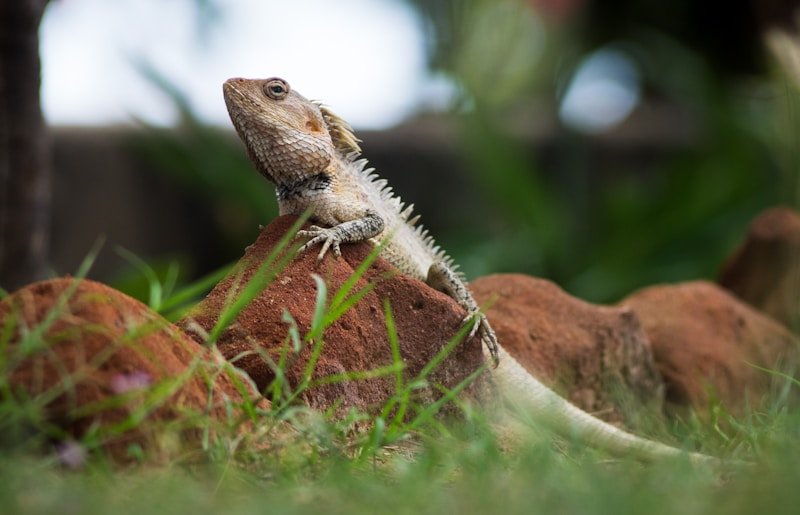The rainforest is one of the most biodiverse ecosystems on Earth, home to an incredible variety of flora and fauna. Among its many inhabitants, reptiles hold a fascinating place. These cold-blooded creatures have adapted remarkably well to the dense, humid, and complex environment of the rainforest. From vibrant snakes to camouflaged lizards and ancient crocodilians, reptiles in the rainforest play crucial roles in maintaining the ecological balance. This article explores some of the most remarkable reptiles of the rainforest, highlighting their adaptations, behaviors, and importance within this lush habitat.
Diversity of Rainforest Reptiles
Rainforests, primarily tropical rainforests, harbor a rich diversity of reptile species. This includes snakes, lizards, turtles, and crocodilians. The warm and moist conditions provide an ideal environment for reptiles, which rely on external heat sources to regulate their body temperature. The structural complexity of the rainforest, with its multilayered canopy, dense undergrowth, and abundant water bodies, offers numerous niches that reptiles have evolved to exploit.
Snakes are among the most diverse reptile groups in rainforests. They range from non-venomous constrictors like the green anaconda to highly venomous species such as the fer-de-lance. Lizards also flourish in the rainforest, with species like the vibrant basilisk, capable of running across water, and various geckos known for their adhesive toe pads, allowing them to cling to leaves and tree trunks.
Adaptations to Rainforest Life
Reptiles in the rainforest exhibit fascinating adaptations that help them survive and thrive in their environment. Camouflage is a common feature, allowing reptiles to blend seamlessly into the foliage or forest floor to evade predators or ambush prey. For example, the eyelash viper’s yellow, green, or brown scales match the surrounding leaves and branches, making it almost invisible to both predators and prey.
Behavioral adaptations also abound. Many rainforest reptiles are arboreal, living primarily in the trees. The prehensile tails of some lizards, like the chameleon, aid in gripping branches, while snakes such as the emerald tree boa have evolved slender bodies and strong muscles to navigate the complex canopy. Moreover, some reptiles have developed nocturnal habits to avoid daytime heat and predation, becoming active during the cooler, darker hours.
Thermoregulation is another critical adaptation. Since reptiles are ectothermic, they must bask in sunlight to raise their body temperatures. In the dense rainforest, sunlight is limited, so reptiles often use sunflecks—brief patches of sunlight that penetrate the canopy—to warm themselves. Others rely on microhabitats like exposed rocks or forest clearings to maintain optimal body temperature.
Ecological Roles of Rainforest Reptiles
Reptiles play vital ecological roles in rainforest ecosystems, influencing both the food web and the environment itself. Many are predators that help control populations of insects, rodents, and other small animals, maintaining a natural balance. For example, snakes like the boa constrictor prey on mammals and birds, keeping their populations in check.
Some reptiles are prey for larger predators, making them an essential link in the food chain. Their eggs and juveniles provide nourishment for birds, mammals, and amphibians. Additionally, certain reptiles act as seed dispersers. The green iguana, which feeds on fruits and leaves, contributes to seed dispersal by passing seeds through its digestive system, facilitating forest regeneration.
Furthermore, reptiles such as turtles and crocodilians contribute to the physical environment of the rainforest. Crocodiles, through their nesting and feeding habits, help shape aquatic ecosystems by creating open water areas used by other species. Turtles contribute to nutrient cycling by consuming organic matter and redistributing nutrients in water bodies.
Conservation Challenges and Efforts
Despite their importance, many rainforest reptiles face significant threats from human activity. Habitat destruction due to logging, agriculture, and urban expansion has led to shrinking rainforest areas, threatening the survival of numerous reptile species. Illegal wildlife trade is another critical issue, with many reptiles captured for pets, traditional medicine, or souvenirs.
Climate change also poses risks by altering temperature and precipitation patterns, which can disrupt the delicate balance of rainforest ecosystems and affect reptiles’ reproductive cycles and survival rates.
Conservation efforts are underway to protect these fascinating creatures. Protected areas and national parks help preserve critical habitats, while research programs aim to understand reptile ecology better and develop sustainable management plans. Education and awareness campaigns are vital in reducing poaching and promoting coexistence between humans and reptiles.
In addition, captive breeding and reintroduction programs have shown promise in bolstering populations of endangered species. International cooperation is key, as many reptiles inhabit regions spanning multiple countries.
Conclusion
Reptiles of the rainforest are a testament to nature’s incredible adaptability and diversity. Their unique adaptations allow them to thrive in one of the most challenging environments on Earth, and their ecological roles are indispensable in maintaining the health of rainforest ecosystems. Protecting these reptiles is not only crucial for preserving biodiversity but also for ensuring the continued vitality of the rainforests themselves. As we deepen our understanding of these remarkable creatures, it becomes clear that their survival is intricately linked to the fate of the rainforests—a precious resource that sustains life on our planet.

